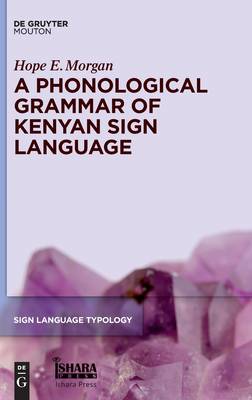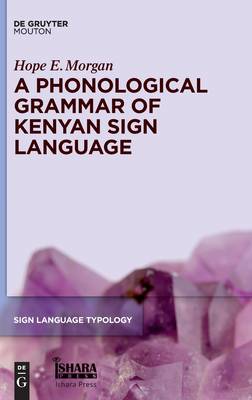
- Afhalen na 1 uur in een winkel met voorraad
- Gratis thuislevering in België vanaf € 30
- Ruim aanbod met 7 miljoen producten
- Afhalen na 1 uur in een winkel met voorraad
- Gratis thuislevering in België vanaf € 30
- Ruim aanbod met 7 miljoen producten
Zoeken
Omschrijving
This grammar of Kenyan Sign Language (KSL) phonology adds to a sparse literature on the units of categorical form in the world's sign languages. At the same time, it brings descriptive and theoretical research on sign language phonology into better alignment by systematically evaluating current models of sign language phonology for each of the main parameters - handshape, location, and movement - against the KSL data. This grammar also makes a methodological contribution by using a unique dataset of KSL minimal pairs in the analysis, demonstrating that minimal pairs are not as infrequent in sign languages as previously thought.
The main content of the book is found in five chapters on handshape, location, core articulatory movement, manner of movement, and other distinctive features (e.g., orientation, mouth actions). The book also contains two large appendices that document the phonological evidence for each of the 44 handshapes and 37 locations.
This book will be a key reference for descriptive and typological studies of sign phonology, as well as a helpful resource for linguists interested in understanding the similarities and differences between current models of sign phonology and identifying promising avenues for future research.
The main content of the book is found in five chapters on handshape, location, core articulatory movement, manner of movement, and other distinctive features (e.g., orientation, mouth actions). The book also contains two large appendices that document the phonological evidence for each of the 44 handshapes and 37 locations.
This book will be a key reference for descriptive and typological studies of sign phonology, as well as a helpful resource for linguists interested in understanding the similarities and differences between current models of sign phonology and identifying promising avenues for future research.
Specificaties
Betrokkenen
- Auteur(s):
- Uitgeverij:
Inhoud
- Aantal bladzijden:
- 634
- Taal:
- Engels
- Reeks:
- Reeksnummer:
- nr. 11
Eigenschappen
- Productcode (EAN):
- 9783110763027
- Verschijningsdatum:
- 1/08/2022
- Uitvoering:
- Hardcover
- Formaat:
- Genaaid
- Afmetingen:
- 155 mm x 231 mm
- Gewicht:
- 1020 g

Alleen bij Standaard Boekhandel
+ 609 punten op je klantenkaart van Standaard Boekhandel
Beoordelingen
We publiceren alleen reviews die voldoen aan de voorwaarden voor reviews. Bekijk onze voorwaarden voor reviews.








